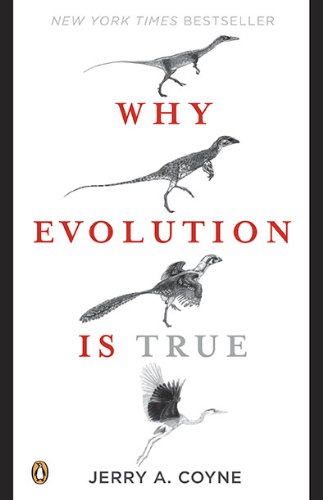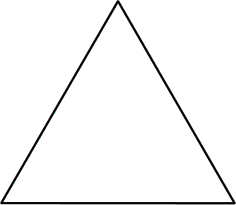
Memes
 Evolution is Personal
Evolution is Personal
Among the wonders that science has uncovered about the universe
in which we dwell, no subject has caused more fascination
and fury than evolution. That is probably because no majestic
galaxy or fleeting neutrino has implications that are as personal. Learning
about evolution can transform us in a deep way. It shows us our
place in the whole splendid and extraordinary panoply of life. It unites us
with every living thing on the Earth today and with myriads of creatures
long dead. Evolution giv...The story of evolution is captivating precisely because it is so connected to us.
 DNA as Evidence of Common Ancestry
DNA as Evidence of Common Ancestry
By sequencing
the DNA of various species and measuring how similar these sequences
are, we can reconstruct their evolutionary relationships. This is done
by making the entirely reasonable assumption that species having more
similar DNA are more closely related—that is, their common ancestors
lived more recently. These molecular methods have not produced much
change in the pre-DNA-era trees of life: both the visible traits of organisms
and their DNA sequences usually give the same informatio...The idea of common ancestry leads naturally to powerful and testable predictions about evolution.
 Design As Evidence of Evolution or Creation
Design As Evidence of Evolution or Creation
It’s important to realize, though, that there’s a real difference in what
you expect to see if organisms were consciously designed rather than if
they evolved by natural selection. Natural selection is not a master engineer,
but a tinkerer. It doesn’t produce the absolute perfection achievable
by a designer starting from scratch, but merely the best it can do with
what it has to work with. Mutations for a perfect design may not arise
because they are simply too rare. The African rhinoce...There's a big difference between how species would look if they were designed or engineered versus how they would look if they evolved. Evolution works with pre-existing traits, and engineer works from scratch.
 Big History: A Summary of Evolution of Life on Earth
Big History: A Summary of Evolution of Life on Earth
The first organisms, simple photosynthetic bacteria, appear in sediments
about 3.5 billion years old, only about a billion years after the
planet was formed. These single cells were all that occupied the Earth
for the next two billion years, after which we see the first simple “eukaryotes”:
organisms having true cells with nuclei and chromosomes. Then,
around 600 million years ago, a whole gamut of relatively simple but
multicelled organisms arise, including worms, jellyfish, and sponges....A good summary of the origin of life on Earth evolving all the way up to human beings.
 Birds to Reptiles
Birds to Reptiles
Because reptiles appear in the fossil record before birds, we can guess
that the common ancestor of birds and reptiles was an ancient reptile,
and would have looked like one. We now know that this common ancestor
was a dinosaur. Its overall appearance would give few clues that it was
indeed a “missing link”—that one lineage of descendants would later give
rise to all modern birds, and the other to more dinosaurs. Truly birdlike
traits, such as wings and a large breastbone for anchoring ...Birds and reptiles share many resemblances, meaning they have a common ancestor, which is dinosaurs.
 Evolutionary Theory Prediction Comes True in Walking Fish
Evolutionary Theory Prediction Comes True in Walking Fish
This is where the prediction comes in. If there were lobe-finned fishes
but no terrestrial vertebrates 390 million years ago, and clearly terrestrial vertebrates 360 million years ago, where would you expect to find the
transitional forms? Somewhere in between. Following this logic, Shubin
predicted that if transitional forms existed, their fossils would be found
in strata around 375 million years old. Moreover, the rocks would have
to be from freshwater rather than marine sediments, because ...Tiktaalik was discovered right where evolution predicted it should exist, with traits that brought it closer to land without making it onto land, creating another fossil prediction for the future.
 Hippopotamus as Closest Relative to the Whale
Hippopotamus as Closest Relative to the Whale
good candidate is the hippopotamus, which, although closely
related to terrestrial mammals, is about as aquatic as a land mammal can
get. (There are two species, the pygmy hippo and the “regular” hippo,
whose scientific name is, appropriately, Hippopotamus amphibius.) Hippos
spend most of their time submerged in tropical rivers and swamps,
surveying their domain with eyes, noses, and ears that sit atop their
head, all of which can be tightly closed underwater. Hippos mate in the
water, an...A list of the traits hippos exhibit that make the land mammal a likely candidate for being related to the whale.
 Evolution of the Whale
Evolution of the Whale
Indohyus was not the ancestor of whales, but was almost certainly its
cousin. But if we go back four million more years, to fifty-two million
years ago, we see what might well be that ancestor. It is a fossil skull from
a wolf-sized creature called Pakicetus, which is a bit more whale-like than
Indohyus, having simpler teeth and more whale-like ears. Pakicetus still
looked nothing like a modern whale, so if you had been around to see
it, you wouldn’t have guessed that it or its close relati...Species by species list of the links from ancient land mammals to the whale.
 Clarification of the Term "Vestigial"
Clarification of the Term "Vestigial"
Opponents of evolution always raise the same argument when vestigial
traits are cited as evidence for evolution. “The features are not
useless,” they say. “They are either useful for something, or we haven’t
yet discovered what they’re for.” They claim, in other words, that a trait
can’t be vestigial if it still has a function, or a function yet to be found.
But this rejoinder misses the point. Evolutionary theory doesn’t say
that vestigial characters have no function. A trai...A trait is vestigial not because it no longer serves a purpose, but because it no longer serves its original purpose.
 Vestigial Traits in Humans
Vestigial Traits in Humans
Our bodies teem with other remnants of primate ancestry. We have a
vestigial tail: the coccyx, or the triangular end of our spine, that’s made
of several fused vertebrae hanging below our pelvis. It’s what remains
of the long, useful tail of our ancestors. It still has a function
(some useful muscles attach to it), but remember that its vestigiality is
diagnosed not by its usefulness but because it no longer has the function
for which it originally evolved. Tellingly, some humans have a r...Remnants of a tail, muscles that serve no purpose, etc.
 Atavism In Modern Horses
Atavism In Modern Horses
Modern horses, which descend from smaller, five-toed ancestors,
show similar atavisms. The fossil record documents the gradual loss
of toes over time, so that in modern horses only the middle one—the
hoof—remains. It turns out that horse embryos begin development with
three toes, which grow at equal rates. Later, however, the middle toe
begins to grow faster than the other two, which at birth are left as thin
“splint bones” along either side of the leg. (Splint bones are true vestigia...Modern horses have a common birth defect of growing extra toes from when their ancestors had them.
 Hen's Teeth
Hen's Teeth
Some atavisms can be produced in the laboratory. The most amazing
of these is that paragon of rarity, hen’s teeth. In 1980, E. J. Kollar and
C. Fisher at the University of Connecticut combined the tissues of two
species, grafting the tissue lining the mouth of a chicken embryo on top
of tissue from the jaw of a developing mouse. Amazingly, the chicken
tissue eventually produced tooth-like structures, some with distinct roots
and crowns! Since the underlying mouse tissue alone could not prod...An experiment from 1980 that stimulated hens to grow teeth by triggering a gene holdover from their ancient reptilian ancestors.
 Vestigial GLO Pseudogene
Vestigial GLO Pseudogene
And the evolutionary prediction that we’ll find pseudogenes has been
fulfilled—amply. Virtually every species harbors dead genes, many of them still active in its relatives. This implies that those genes were also
active in a common ancestor, and were killed off in some descendants but
not in others. Out of about 30,000 genes, for example, we humans carry
more than 2,000 pseudogenes. Our genome—and that of other species—
are truly well populated graveyards of dead genes.
The most fam...Used to produce Vitamin C, alive in most mammals, but dead in humans, primates, and others.
 Dolphins have Genes for Smelling
Dolphins have Genes for Smelling
Another curious tale of dead genes involves our sense of smell, or
rather our poor sense of smell, for humans are truly bad sniffers among
land mammals. Nevertheless, we can still recognize over 10,000 different
odors. How can we accomplish such a feat? Until recently, this was a
completely mystery. The answer lies in our DNA—in our many olfactory
receptor (OR) genes.
[...]
Our own sense of smell comes nowhere close to that of mice. One
reason is that we express fewer OR genes—only abou...Yet, as aquatic mammals, they have no need to smell anything.
 Ontogeny Recapitulates Phylogeny
Ontogeny Recapitulates Phylogeny
Now, we’re not absolutely sure why some species retain much of their
evolutionary history during development. The “adding new stuff onto
old” principle is just a hypothesis—an explanation for the facts of embryology.
It’s hard to prove that it was easier for a developmental program
to evolve one way rather than another. But the facts of embryology
remain, and make sense only in light of evolution. All vertebrates begin
development looking like embryonic fish because we all descended...Embryos go through the stages of the evolution of their ancestors as they develop.
 Human Fetuses Develop Useless Hair
Human Fetuses Develop Useless Hair
One of my favorite cases of embryological evidence for evolution is
the furry human fetus. We are famously known as “naked apes” because,
unlike other primates, we don’t have a thick coat of hair. But in fact
for one brief period we do—as embryos. Around sixth months after conception, we become completely covered with a fine, downy coat of
hair called lanugo. Lanugo is usually shed about a month before birth,
when it’s replaced by the more sparsely distributed hair with which we’r...That appears at the same time in development as it does in Chimpanzees, but then vanishes.
 The Flounder's Eye
The Flounder's Eye
A good example of bad design is the flounder, whose popularity as an
eating fish (Dover sole, for instance) comes partly from its flatness, which
makes it easy to bone. There are actually about 500 species of flatfish—
halibut, turbot, flounders, and their kin—all placed in the order Pleuronectiformes.
The word means “side-swimmers,” a description that’s
the key to their poor design. Flatfish are born as normal-looking fish that
swim vertically, with one eye placed on each side of a...A fantastic example of bad design as it moves from one side of the fish's head to the other.
 Convergent Evolution in Cacti and Succulents
Convergent Evolution in Cacti and Succulents
Let’s begin with one observation that strikes anyone who travels widely.
If you go to two distant areas that have similar climate and terrain,
you find different types of life. Take deserts. Many desert plants are
succulents: they show an adaptive combination of traits that include
large fleshy stems to store water, spines to deter predators, and small or
missing leaves to reduce water loss. But different deserts have different
types of succulents. In North and South America, the succulents...The two groups of species share many many traits, but they exist in completely different parts of the world, evolving separately, but converging to be almost interchangeable.
 The Asian Giant Hornet
The Asian Giant Hornet
One of the marvels of evolution is the Asian giant hornet, a
predatory wasp especially common in Japan. It’s hard to imagine
a more frightening insect. The world’s largest hornet, it is
as long as your thumb, with a two-inch body bedecked with menacing
orange and black stripes. It’s armed with fearsome jaws to clasp and kill
its insect prey, and also a quarter-inch stinger that proves lethal to several
dozen Asians a year. And with a 3-inch wingspan, it can fly 25 miles per
hour (far fa...European honeybees are defenseless against this predator, but Asian honeybees have evolved an amazing counter attack.
 Dogs are Evolved from Wolves Through Artificial Selection
Dogs are Evolved from Wolves Through Artificial Selection
Take the domestic dog (Canis lupus familiaris), a single species that
comes in all shapes, sizes, colors, and temperaments. Every single one, purebred or mutt, descends from a single ancestral species—most likely
the Eurasian gray wolf—that humans began to select about 10,000 years
ago. The American Kennel Club recognizes 150 different breeds, and
you’ve seen many of them: the tiny, nervous Chihuahua, perhaps bred
as a food animal by the Toltec of Mexico; the robust Saint Bernard,
thick...Breeders are able to sculpt dogs into whatever they desire. Experimental proof of evolution.
 Examples of Species Evolved through Human Artificial Sele...
Examples of Species Evolved through Human Artificial Sele...
The dog can stand for the success of other breeding programs. As
Darwin noted in The Origin, “Breeders habitually speak of an animal’s
organization as something quite plastic, which they can model almost as
they please.” Cows, sheep, pigs, flowers, vegetables, and so on—all came
from humans choosing variants present in wild ancestors, or variants
that arose by mutation during domestication. Through selection, the
svelte wild turkey has become our docile, meaty, and virtually tasteless...Turkeys, corn, broccoli, tomatoes, etc, etc, all bred from wild species into their modern domesticated forms.
 Bacteria Evolve to Process Lactose in a Test Tube
Bacteria Evolve to Process Lactose in a Test Tube
But “laboratory” adaptations can also be more complex, involving
the evolution of whole new biochemical systems. Perhaps the ultimate
challenge is simply to take away a gene that a microbe needs to survive
in a particular environment, and see how it responds. Can it evolve
a way around this problem? The answer is usually yes. In a dramatic
experiment, Barry Hall and his colleagues at the University of Rochester
began a study by deleting a gene from E. coli. This gene produces an
enzyme th...Scientists blocked a gene for digesting lactose in bacteria, which then mutated to have the digestive function taken over by another gene producing an enzyme, which then got progressively selected for efficiency.
 Speciesization in a Test Tube
Speciesization in a Test Tube
We can even see the origin of new, ecologically diverse bacterial
species, all within a single laboratory flask. Paul Rainey and his colleagues
at Oxford University placed a strain of the bacteria Pseudomonas fluorescens
in a small vessel containing nutrient broth, and simply watched
it. (It’s surprising but true that such a vessel actually contains diverse
environments. Oxygen concentration, for example, is highest on the
top and lowest on the bottom.) Within ten days—no more than a few
...Bacteria evolve into different species in order to adapt to the different environments at the bottom and top of a test tube.
 Penicilin Resistant Staphylococcus
Penicilin Resistant Staphylococcus
Another prime example of selection is resistance to penicillin. When
it was introduced in the early 1940s, penicillin was a miracle drug, especially
effective at curing infections caused by the bacteria Staphylococcus
aureus (“staph”). In 1941, the drug could wipe out every strain of staph in
the world. Now, seventy years later, more than 95 percent of staph strains
are resistant to penicillin. What happened was that mutations occurred
in individual bacteria that gave them the ability to ...Evolution in action.
 Resistance to Insecticides and Herbicides as Evolution
Resistance to Insecticides and Herbicides as Evolution
Still other species have adapted via selection to human-caused changes
in their environment. Insects have become resistant to DDT and other
pesticides, plants have adapted to herbicides, and fungi, worms, and
algae have evolved resistance to heavy metals that have polluted their
environment. There almost always seem to be a few individuals with
lucky mutations that allow them to survive and reproduce, quickly evolving
a sensitive population into a resistant one. We can then make a
reasonable ...If plants and insects can evolve resistance to these human-induced selective pressures, then we may assume they evolve to other natural environmental pressures as well.
 Evolution Predicts the Flowering of Mustard Plants
Evolution Predicts the Flowering of Mustard Plants
Here’s another prediction: under prolonged drought, natural selection
will lead to the evolution of plants that flower earlier than their ancestors. This is because, during a drought, soils dry out quickly after the rains. If
you’re a plant that doesn’t flower and produce seeds quickly in a drought,
you leave no descendants. Under normal weather conditions, on the
other hand, it pays to delay flowering so that you can grow larger and
produce even more seeds.
This prediction was tested ...Scientists predict how a drought will affect the flowering time of plants in California, and it comes true.
 Evolution in the Laboratory Occurs Very Quickly
Evolution in the Laboratory Occurs Very Quickly
One approach is to compare the rates of evolution in the fossil record
with those seen in laboratory experiments that used artificial selection, or
with historical data on evolutionary change that occurred when species
colonized new habitats in historical times. If evolution in the fossil
record were much faster than in laboratory experiments or colonization
events—both of which involve very strong selection—we might need to
rethink whether selection could explain changes in fossils. But ...So quickly in fact that scientists could turn an elephant into a mouse in just 10,000 years.
 Evolution of the Eye
Evolution of the Eye
A possible sequence of such changes begins with simple eyespots made
of light-sensitive pigment, as seen in flatworms. The skin then folds in,
forming a cup that protects the eyespot and allows it to better localize
the light source. Limpets have eyes like this. In the chambered nautilus,
we see a further narrowing of the cup’s opening to produce an improved
image, and in ragworms the cup is capped by a protective transparent
cover to protect the opening. In abalones, part of the fluid in t...A simple series of adaptive steps explain the evolution of eyes over time.
 Evolution Takes Time
Evolution Takes Time
True, breeders haven’t turned a cat into a dog, and laboratory studies
haven’t turned a bacterium into an amoeba (although, as we’ve seen, new
bacterial species have arisen in the lab). But it is foolish to think that
these are serious objections to natural selection. Big transformations take
time—huge spans of it. To really see the power of selection, we must
extrapolate the small changes that selection creates in our lifetime over
the millions of years that it has really had to work...A river formed the Grand Canyon, so we know that small processes can have huge effects given enough time.
 Postmating Competition
Postmating Competition
Sexual selection doesn’t end with the sex act itself: males can continue
to compete even after mating. In many species, females mate with more
than one male over a short period of time. After a male inseminates a
female, how can he prevent other males from fertilizing her and stealing
his paternity? This postmating competition has produced some of the
most intriguing features built by sexual selection. Sometimes a male
hangs around after mating, guarding his female against other suitors.
Wh...Various evolutionary strategies males of different species keep a female from mating with other males after sex.
 Mating Strategies of Males and Females
Mating Strategies of Males and Females
A vivid demonstration of this difference can be seen by looking up the
record number of children sired by a human female versus a male. If you
were to guess the maximum number of children that a woman could
produce in a lifetime, you’d probably say around fifteen. Guess again.
The Guinness Book of World Records gives the “official” record number
of children for a woman as sixty-nine, produced by an eighteenth century
Russian peasant. In twenty-seven pregnancies between 1725 and
1745, sh...A Great summary of the differences between them evolutionarily.
 Taxonomies are Not Arbitrary, but Factual
Taxonomies are Not Arbitrary, but Factual
Mayr lived exactly 100 years, producing a stream of books and papers
up to the day of his death. Among these was his 1963 classic, Animal
Species and Evolution, the very book that made me want to study evolution.
In it Mayr recounted a striking fact. When he totaled up the names
that the natives of New Guinea’s Arfak Mountains applied to local birds,
he found that they recognized 136 different types. Western zoologists,
using traditional methods of taxonomy, recognized 137 species. In other...Example of the natives of an island having nearly the same number of classifications of birds as the taxonomists who studies the species.
 The Biological Species Concept (BSC)
The Biological Species Concept (BSC)
And when we think of why we feel that brown-eyed and blue-eyed
humans, or Inuit and !Kung, are members of the same species, we realize
that it’s because they can mate with each other and produce offspring
that contain combinations of their genes. In other words, they belong
to the same gene pool. When you ponder cryptic species, and variation
within humans, you arrive at the notion that species are distinct
not merely because they look different, but because there are barriers
between them ...A species is defined by the fact that its members can breed with one another.
 Barriers that Keep Different Species from Interbreeding
Barriers that Keep Different Species from Interbreeding
What keeps members of two related species from mating with each
other? There are many different reproductive barriers. Species might not
interbreed simply because their mating or flowering seasons don’t overlap.
Some corals, for example, reproduce only one night a year, spewing
out masses of eggs and sperm into the sea over a several-hour period.
Closely related species living in the same area remain distinct because
their peak spawning periods are several hours apart, preventing eggs
of on...Different pheremones, blooming times, geographical isolation can keep members of two different species from breeding.
 Seeing How Species Arise is Similar to Understanding Star...
Seeing How Species Arise is Similar to Understanding Star...
The way we discovered how species arise resembles the way
astronomers discovered how stars “evolve” over time. Both processes
occur too slowly for us to see them happening over our lifetime. But we
can still understand how they work by finding snapshots of the process
at different evolutionary stages and putting these snapshots together
into a conceptual movie. For stars, astronomers saw dispersed clouds
of matter (“star nurseries”) in galaxies. Elsewhere they saw those clouds condens...Just as astronomers search the skies for stars in varying stages of life, biologists look for species in varying degrees development.
 Lineaus Was Persecuted for Lumping Humans with Apes Taxon...
Lineaus Was Persecuted for Lumping Humans with Apes Taxon...
We’ve always perceived ourselves as somehow
standing apart from the rest of nature. Encouraged by the religious
belief that humans were the special object of creation, as well
as by a natural solipsism that accompanies a self-conscious brain, we
resist the evolutionary lesson that, like other animals, we are contingent
products of the blind and mindless process of natural selection.
[...]
The idea that humans are part of nature has been anathema over
most of the history of biology. In 173...Although he thought he was merely seeing God's plan.
 Australopithecus afarensis' Hip Bone Indicates She Could ...
Australopithecus afarensis' Hip Bone Indicates She Could ...
When Lucy’s hundreds of fragments were assembled, she turned out
to be a female of a new species, Australopithecus afarensis, dating back
3.2 million years. She was between 20 and 30 years old, 3.5feet tall,
weighing a scant 60 pounds, and possibly afflicted with arthritis. But
most important, she walked on two legs.
How can we tell? From the way that the femur (thighbone) connects to
the pelvis at one end and to the knee at its other. In a bipedally
walking primate like ourselves, the fem...The bone tilts to bring the knees inward, like it does in humans, but not in chimps, who waddle because they are bow-legged.
 The Laetoli Footprints
The Laetoli Footprints
team of paleoanthropologists led by Mary Leakey confirmed the
bipedality of A. afarensis with another remarkable find in Tanzania: the
famous “Laetoli footprints.” In 1976, Andrew Hill and another member
of the team were taking a break by indulging in a favorite field pastime:
pelting each other with chunks of dried elephant dung. Looking for
ammunition in a dry stream bed, Hill stumbled upon a line of fossilized
footprints. After careful excavation, the footprints turned out to be an
...Not only do these prints demonstrate A. afarensis could walk upright, but the nature of their preservation, having been made in volcanic ash and their proximity to one another, paints a image of two ancestors huddling together in an ashen landscape.
 1.5 Percent Gene Difference Translates to Thousands of Pr...
1.5 Percent Gene Difference Translates to Thousands of Pr...
But recent work shows that our genetic resemblance to our evolutionary
cousins is not quite as close as we thought. Consider this. A
1.5 percent difference in protein sequence means that when we line up
the same protein (say, hemoglobin) of humans and chimps, on average
we’ll see a difference at just one out of every 100 amino acids. But
proteins are typically composed of several hundred amino acids. So a
1.5 percent difference in a protein 300 amino acids long translates into
about four di...The analogy is made that if you change 1 percent of the words you change much more than 1 percent of the sentences, and the same applies to the genetic drift between humans and chimps.
 There Are Human Races
There Are Human Races
In response to these distasteful episodes of racism, some scientists
have overreacted, arguing that human races have no biological reality
and are merely sociopolitical “constructs” that don’t merit scientific
study. But to biologists, race—so long as it doesn’t apply to humans!—
has always been a perfectly respectable term. Races (also called “subspecies”
or “ecotypes”) are simply populations of a species that are both
geographically separated and differ genetically in on...It is wrong to pretend they do not exist, but we should remember that the differences between human races are minor compared to the genetic differences between individuals within a race.
 Human Race Differences the Result of Sexual Selection
Human Race Differences the Result of Sexual Selection
Most of the genetic differences between races are trivial. And yet others,
those physical differences between a Japanese individual and a Finn,
a Masai, and an Inuit, are striking. We have the interesting situation,
then, that the overall differences in gene sequences between peoples are
minor, yet those same groups show dramatic differences in a range of
visually apparent traits, such as skin color, hair color, body form, and
nose shape. These obvious physical differences are not characteris...Cultural norms in different societies probably shaped many of the physical differences we see between races today, different definitions of beauty.
 Evolution of Lactose Tolerance
Evolution of Lactose Tolerance
One case involves our ability to digest lactose, a sugar found in milk.
An enzyme called lactase breaks down this sugar into the more easily
absorbed sugars glucose and galactose. We are born with the ability to
digest milk, of course, for that’s always been the main food of infants.
But after we’re weaned, we gradually stop producing lactase. Eventually,
many of us entirely lose our ability to digest lactose, becoming “lactose
intolerant” and prone to diarrhea, bloating, and cramps a...Some groups of humans evolved the ability to digest milk beyond infancy as their societies domesticated cows.
 Are Humans Still Evolving?
Are Humans Still Evolving?
Anybody who teaches human evolution is inevitably asked: Are we
still evolving? The examples of lactose tolerance and duplication of the
amylase gene show that selection has certainly acted within the last few
thousand years. But what about right now? It’s hard to give a good
answer. Certainly many types of selection that challenged our ancestors
no longer apply: improvements in nutrition, sanitation, and medical
care have done away with many diseases and conditions that killed our
ancestor...Culture has removed many of the selective pressures from human survival, allowing harmful mutations to build up in the genepool; meanwhile, people living in third-world countries continue to experience selective pressures from droughts, famines, and disease.
 Evolution Threatens Creationists Sense of Values
Evolution Threatens Creationists Sense of Values
At this point I could simply say, “I’ve given the evidence, and it shows
that evolution is true. Q.E.D.” But I’d be remiss if I did that, because, like
the businessman I encountered after my lecture, many people require
more than just evidence before they’ll accept evolution. To these folks,
evolution raises such profound questions of purpose, morality, and
meaning that they just can’t accept it no matter how much evidence they
see. It’s not that we evolved from apes that bother...Resistance to evolution is less about the theory and more about its moral implications.
 Humans Should be Proud
Humans Should be Proud
Evolution is neither moral nor immoral. It just is, and we make
of it what we will. I have tried to show that two things we can make of
it are that it’s simple and it’s marvelous. And far from constricting our
actions, the study of evolution can liberate our minds. Human beings
may be only one small twig on the vast branching tree of evolution,
but we’re a very special animal. As natural selection forged our brains,
it opened up for us whole new worlds. We have learned how to improve
ou...We are the one species of 3.5 billion years of evolution that has figured out how we got here.
 The Species Missing from Islands
The Species Missing from Islands
Native
Missing
Plants
Land mammals
Birds
Reptiles
Insects and other
Amphibians
arthropods (e.g., spiders)
Freshwater fish
[...]
Further, when you look at the type of insects and plants native to oceanic islands, they are from groups that are the best colonizers. Most of the insects are small, precisely those that would be easily picked up by wind. Compared to weedy plants, trees are relatively rare on oceanic islands, almost certainly because many trees have heavy seeds that neither fl...The fact that the species that exist on islands could only have migrated there versus the ones that do not exist are evidence of evolution.
 Evolution Remodels the Old into New
Evolution Remodels the Old into New
...evolutionary change, even of a major sort, nearly always
involves remodeling the old into the new. The legs of land animals are
variations on the stout limbs of ancestral fish. The tiny middle ear bones
of mammals are remodeled jawbones of their reptilian ancestors. The
wings of birds were fashioned from the legs of dinosaurs. And whales are
stretched-out land animals whose forelimbs have become paddles and
whose nostrils have moved atop their head.Evolution modifies existing structures rather than creating new ones from scratch.
 Research Conquers our Ignorance
Research Conquers our Ignorance
Hard problems often yield before science, and though we still don’t
understand how every complex biochemical system evolved, we are
learning more every day. After all, biochemical evolution is a field in still
its infancy. If the history of science teaches us anything, it is that what
conquers our ignorance is research, not giving up and attributing our
ignorance to the miraculous work of a creator. When you hear someone
claim otherwise, just remember these words of Darwin: “Ignorance mor...Science yields answers in time, ignorance begets confidence in the present.
 Mammals Produce Useless Yolks
Mammals Produce Useless Yolks
Vestigial genes can go hand in hand with vestigial structures. We
mammals evolved from reptilian ancestors that laid eggs. With the
exceptions of the “monotremes” (the order of mammals that includes
the Australian spiny anteater and duck-billed platypus), mammals have
dispensed with egg-laying, and mothers nourish their young directly
through the placenta instead of by providing a storehouse of yolk. And
mammals carry three genes that, in reptiles and birds, produce the
nutritious protein...Because they evolve from egg-laying reptiles, they have dead genes for producing yolks and even produce yolks in the placenta.
 Convergent Evolution in Mammals and Marsupials
Convergent Evolution in Mammals and Marsupials
The most famous example of different species filling similar roles
involves the marsupial mammals, now found mainly in Australia
(the Virginia opossum is a familiar exception), and placental mammals,
which predominate elsewhere in the world. The two groups show important
anatomical differences, most notably in their reproductive systems
(almost all marsupials have pouches and give birth to very undeveloped
young, while placentals have placentas that enable young to be born at
a more advanced ...Although they have very different reproductive strategies, the two groups have many parallels in species adapted to the same environments.
 "Natural" Classification of Species as Evidence for Evolu...
"Natural" Classification of Species as Evidence for Evolu...
Actually, the nested arrangement of life was recognized long before
Darwin. Starting with the Swedish botanist Carl Linnaeus in , biologists
began classifying animals and plants, discovering that they consistently
fell into what was called a “natural” classification. Strikingly,
different biologists came up with nearly identical groupings. This means
that these groupings are not subjective artifacts of a human need to
classify, but that they tell us something real and fundamen...Taxonomists working independently naturally "nest" species in the same groups.




